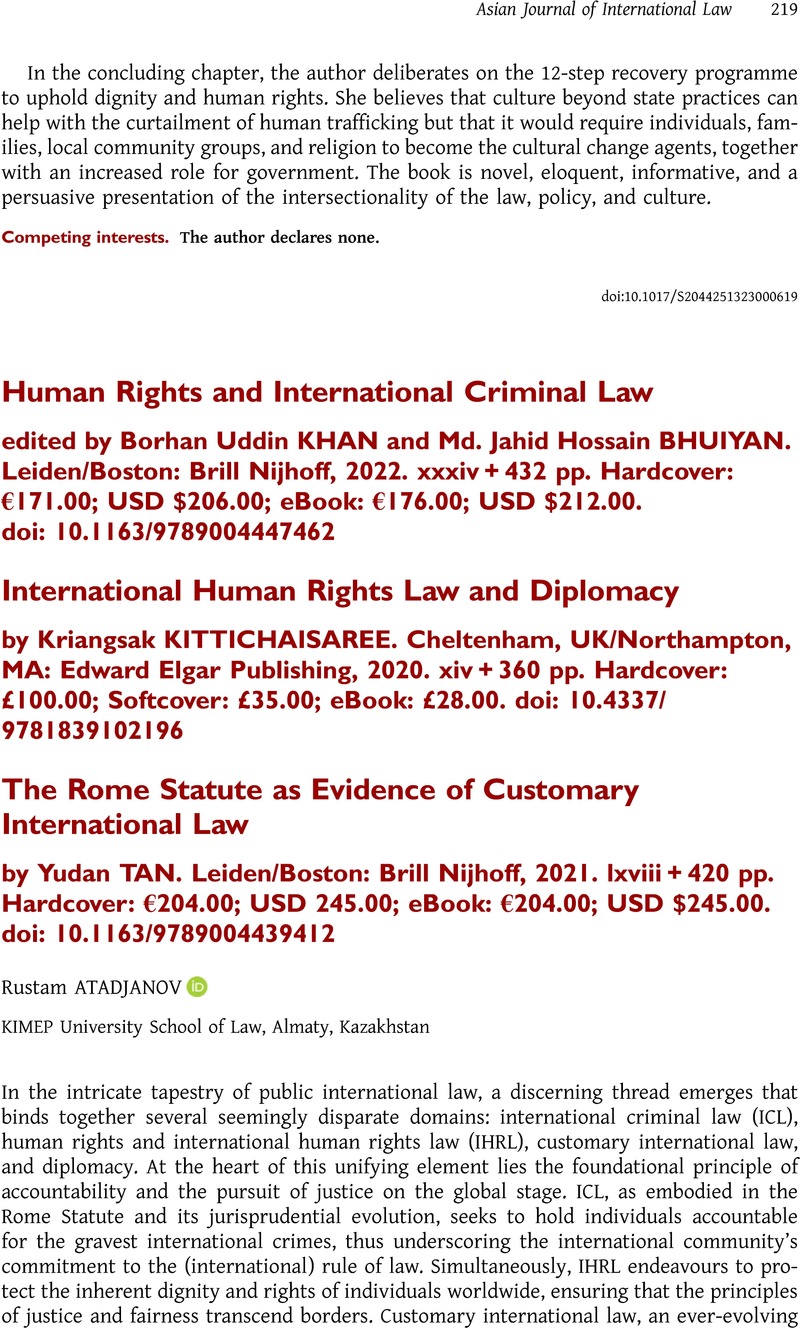No CrossRef data available.
Article contents
Human Rights and International Criminal Law edited by Borhan Uddin KHAN and Md. Jahid Hossain BHUIYAN. Leiden/Boston: Brill Nijhoff, 2022. xxxiv + 432 pp. Hardcover: €171.00; USD $206.00; eBook: €176.00; USD $212.00. doi: 10.1163/9789004447462 - International Human Rights Law and Diplomacy by Kriangsak KITTICHAISAREE. Cheltenham, UK/Northampton, MA: Edward Elgar Publishing, 2020. xiv + 360 pp. Hardcover: £100.00; Softcover: £35.00; eBook: £28.00. doi: 10.4337/9781839102196 - The Rome Statute as Evidence of Customary International Law by Yudan TAN. Leiden/Boston: Brill Nijhoff, 2021. lxviii + 420 pp. Hardcover: €204.00; USD 245.00; eBook: €204.00; USD $245.00. doi: 10.1163/9789004439412
Review products
Human Rights and International Criminal Law edited by Borhan Uddin KHAN and Md. Jahid Hossain BHUIYAN. Leiden/Boston: Brill Nijhoff, 2022. xxxiv + 432 pp. Hardcover: €171.00; USD $206.00; eBook: €176.00; USD $212.00. doi: 10.1163/9789004447462
International Human Rights Law and Diplomacy by Kriangsak KITTICHAISAREE. Cheltenham, UK/Northampton, MA: Edward Elgar Publishing, 2020. xiv + 360 pp. Hardcover: £100.00; Softcover: £35.00; eBook: £28.00. doi: 10.4337/9781839102196
The Rome Statute as Evidence of Customary International Law by Yudan TAN. Leiden/Boston: Brill Nijhoff, 2021. lxviii + 420 pp. Hardcover: €204.00; USD 245.00; eBook: €204.00; USD $245.00. doi: 10.1163/9789004439412
Published online by Cambridge University Press: 06 December 2023
Abstract
An abstract is not available for this content so a preview has been provided. Please use the Get access link above for information on how to access this content.

- Type
- Book Review
- Information
- Copyright
- Copyright © The Author(s), 2023. Published by Cambridge University Press on behalf of the Asian Society of International Law


